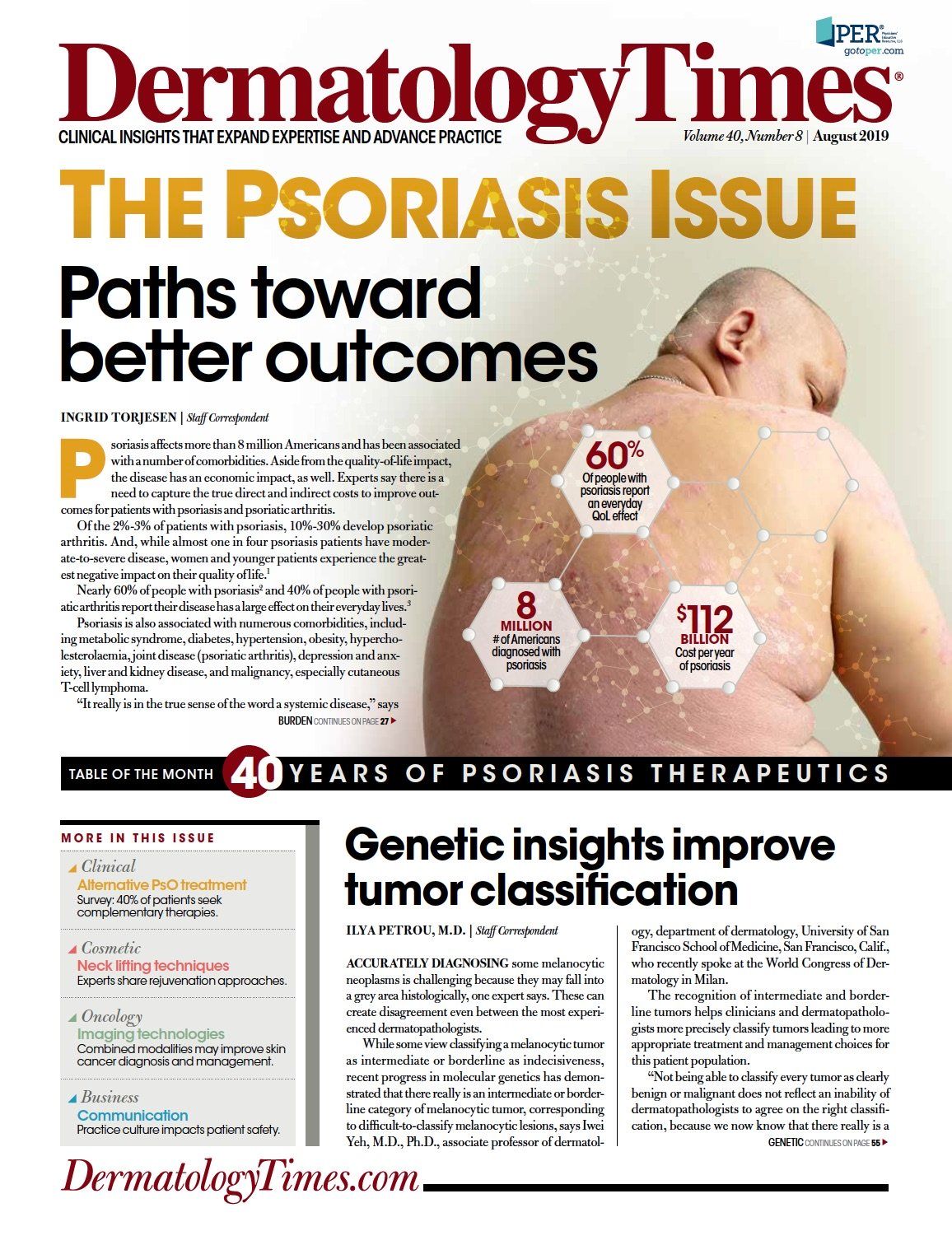- Case-Based Roundtable
- General Dermatology
- Eczema
- Chronic Hand Eczema
- Alopecia
- Aesthetics
- Vitiligo
- COVID-19
- Actinic Keratosis
- Precision Medicine and Biologics
- Rare Disease
- Wound Care
- Rosacea
- Psoriasis
- Psoriatic Arthritis
- Atopic Dermatitis
- Melasma
- NP and PA
- Skin Cancer
- Hidradenitis Suppurativa
- Drug Watch
- Pigmentary Disorders
- Acne
- Pediatric Dermatology
- Practice Management
- Prurigo Nodularis
- Buy-and-Bill
Publication
Article
Dermatology Times
New tool to identify psoriatic arthritis
Author(s):
A recent study found that Psoriasis Epidemiology Screening Tool (PEST) may help dermatologists identify which patients need a rheumatology referral.
Psoriasis is a chronic prevalent inflammatory disease of the skin that affects approximately 4% of the population. It is estimated that 30% of patients with psoriasis also suffer from psoriatic arthritis. The presence of psoriatic arthritis has implications and treatment joints and morbidity, therefore recognizing psoriatic arthritis is paramount. Unfortunately, several studies have demonstrated that psoriatic arthritis is under diagnosed in patients with psoriasis.
In an article addressing psoriatic arthritis diagnosis, P.J. Mease, M.D., of the Swedish Medical Center, University of Washington, Seattle, and colleagues used the Psoriasis Epidemiology Screening Tool (PEST), a validated short questionnaire to detect undiagnosed psoriatic arthritis. The report was published in the Journal of the European Academy of Dermatology and Venereology in January 2019.1
RELATED: How to talk to patients about their weight
The PEST was applied to patients in the Corrona Psoriasis Registry, a large, independent, prospective, observational cohort of patients with psoriasis. Nine hundred and four (56% of the cohort) patients with psoriasis and no diagnosis of psoriatic arthritis at enrollment. Of the patients with no history of psoriatic arthritis 112 (12%) had a PEST score of three or more, suggesting the need for further psoriatic arthritis evaluation. Elevated PEST score was also associated with nail pitting, elevated BMI which are also risk factors for the development of psoriatic arthritis.
The authors postulate that the PEST can help dermatologists identify which patients need a rheumatology referral. This assists with timely diagnosis of psoriatic arthritis and prevention of erosive disease that occur within the first year of psoriatic arthritis onset, which is associated with more disability.
The authors note that there are several modalities at the dermatologists disposal to identify psoriatic arthritis, such as ToPAS, PASQ, and PACE. More head-to-head comparisons are required to identify which tool performs best.
Still, the observed 12% of patients with a PEST score of three or more reinforces the importance of screening psoriasis patients for psoriatic arthritis.
More on psoriatic arthritis: Why you need to ID features specific to psoriatic arthritis
References:
1 Mease PJ, Palmer JB, Hur P, et al. Utilization of the validated Psoriasis Epidemiology Screening Tool to identify signs and symptoms of psoriatic arthritis among those with psoriasis: a cross-sectional analysis from the US-based Corrona Psoriasis Registry. J Eur Acad Dermatol Venereol. 2019;33(5):886-892.






